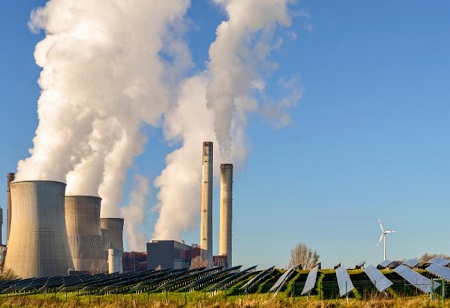Over 1.3 GW of additional renewable capacity was installed by the state-run power firm NTPC in the fiscal year 2022–2023 (FY23) up till December 31, 2022. It has also begun promoting efforts in other crucial fields including nuclear energy and carbon capture as part of a bigger push towards clean energy. "NTPC is firmly committed to using renewable energy. Up till the end of December 2022, NTPC has increased its renewable energy capacity by more than 1.3 GW. The company has also entered a number of industry sectors, such as waste-to-wealth, green hydrogen solutions, and e-mobility, Director of Finance Jaikumar Srinivasan recently stated.
As of December 31, 2022, the NTPC Group has already put 3,154 MW of renewable energy projects into service under the EPC model, and 4,718 MW of projects, including continuing NTPC REL projects, were in various stages of construction. According to Srinivasan, preparations are in various stages for the development of two additional 24 GW Ultra Mega Renewable Energy Power Parks. "Further bids for 340 MW capacity RE projects have been won and
will be granted soon," he stated. NTPC Renewable Energy Ltd. had also inked a green term loan deal with Union Bank of India for Rs. 1,325 crore, which included loans totaling Rs. 825 crore that were secured and Rs. 500 crore that were unsecured, both at very affordable rates. The secured loan has a 20-year term, the longest tenor ever offered by a domestic lender inside NTPC. The unsecured loan has a five-year term with a bullet payback schedule and may be applied to any NTPC REL project now under development, he continued.
Srinivasan stated that NTPC intends to venture into nuclear power in order to meet the nation's net-zero energy target by 2070. According to him, ASHVINI, a joint venture between NTPC and Nuclear Power Corporation of India, will be used by NTPC to build pressurised heavy water reactors (PHWR) to increase nuclear power capacity.
Government-to-government partnerships were also being considered for the implementation of small modular reactors and pressurised water reactors to increase nuclear capacity. In addition, to guarantee the necessary fuel is available, NTPC is seeking fuel tie-ups with Uranium Corporation of India Ltd. Two PWHR projects Chukka in Madhya Pradesh and Mahi Banswara in Rajasthan will be transferred from NPCIL to ASHVINI, according to Srinivasan.
NTPC, Carbon Capture Utilization & Storage (CCUS) is one of the main elements of India's CO2 mitigation strategy. To accomplish this, the NTPC research arm NETRA and the Council of Scientific and Industrial Research's Central Building Research Institute in Roorkee launched a research and development project for the creation of carbon-negative "carbonated aggregate," which can be used in building, road, and other construction activities. It was further said that as part of this project, CO2 will be turned into CO2 sequestered engineered aggregates, also known as carbonated or mineralized aggregate, from flue gas, fly ash, and other industrial wastes. When developed, carbonated aggregate is anticipated to provide a competitive alternative to natural aggregate and help the environment and ecology, according to the business.
